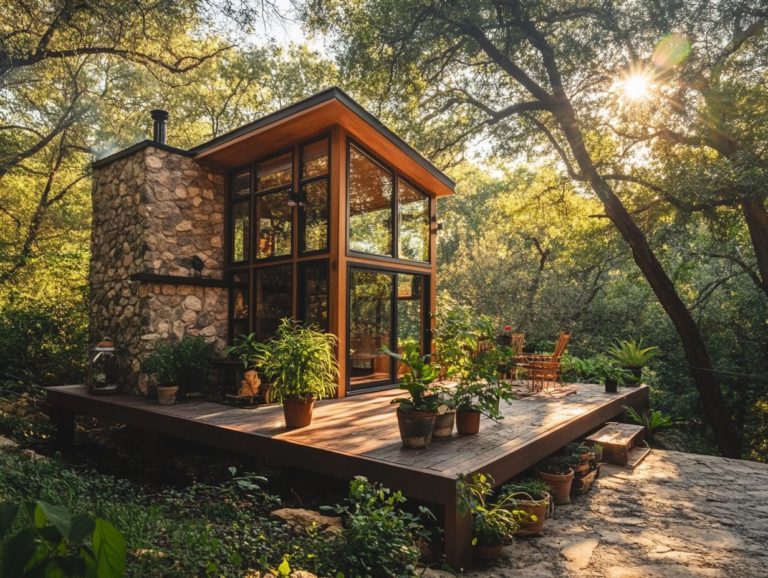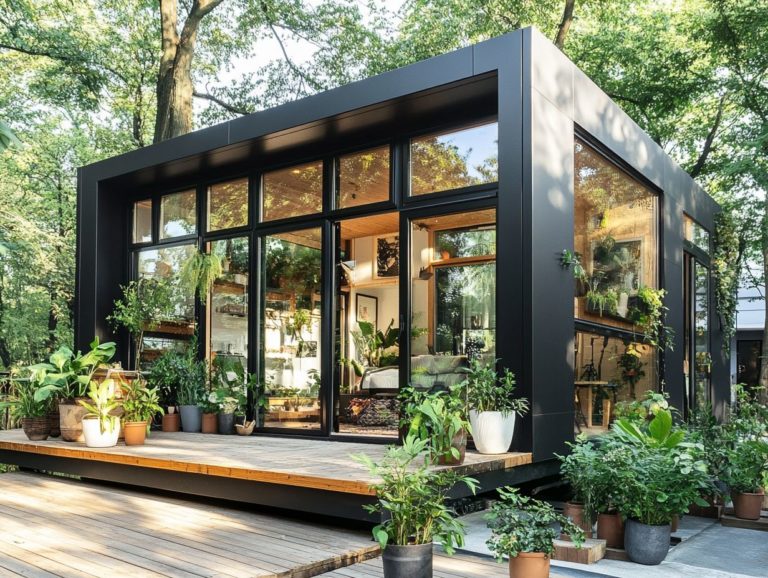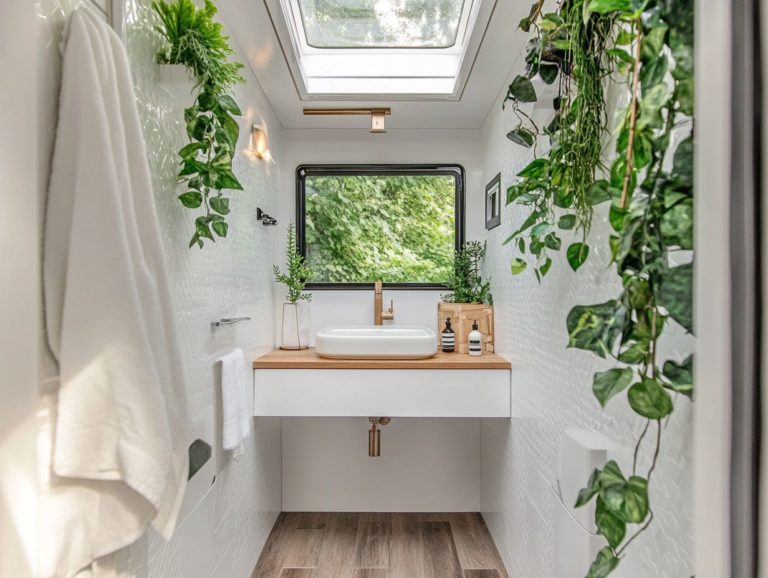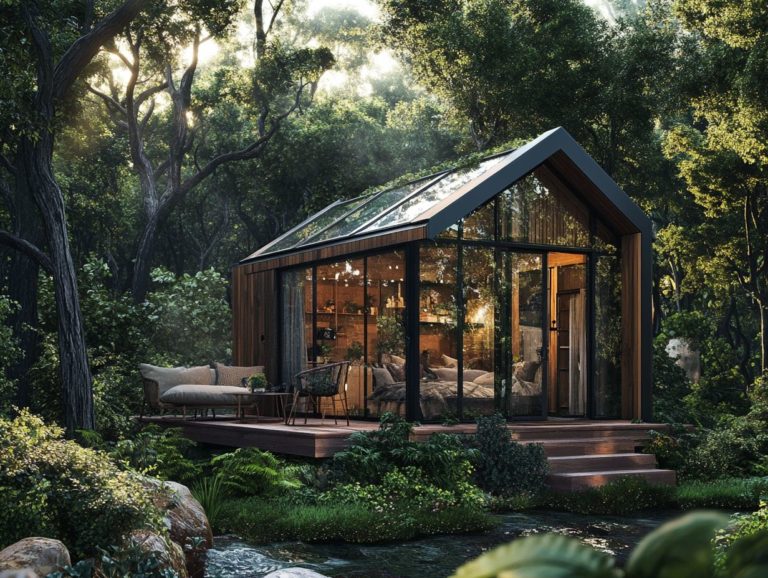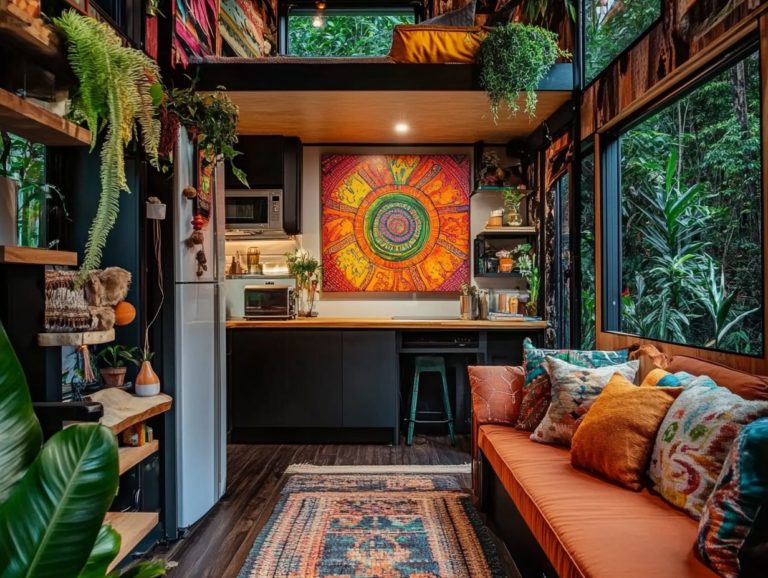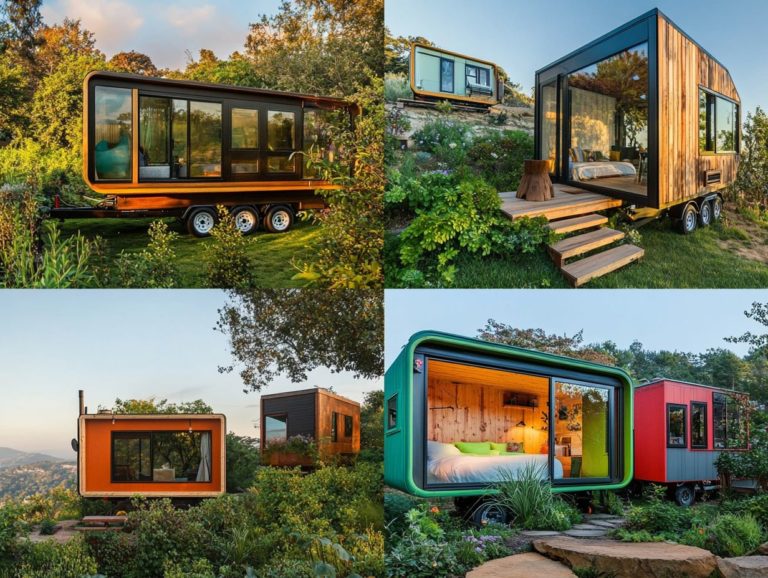5 Ways to Enhance Privacy in Tiny House Designs
Living in a tiny house offers a unique chance to embrace simplicity and sustainability. However, maintaining privacy in such compact spaces can be a challenge.
This article explores five innovative strategies to enhance your personal sanctuary. You’ll discover ways to incorporate natural barriers and use multi-functional furniture. We ll highlight the benefits of privacy, discuss the challenges faced by tiny dwellers, and offer creative solutions to help you carve out your own space.
Learn how to design a tiny home that respects your need for privacy while fully embracing a minimalist lifestyle.
Contents [hide]
- Key Takeaways:
- 1. Incorporate Natural Barriers
- 2. Utilize Multi-Functional Furniture
- 3. Create a Separate Entrance
- 4. Install Privacy Screens
- 5. Utilize Vertical Space
- How Can Tiny House Dwellers Maintain Privacy?
- Frequently Asked Questions
- 1. How can I enhance privacy in my tiny house design?
- 2. What are some effective partition options for tiny house designs?
- 3. How can clever storage solutions enhance privacy in a tiny house?
- 4. Why is multi-functional furniture important for privacy in tiny house designs?
- 5. How can designated zones enhance privacy in a tiny house?
- 6. What exterior features can be added to enhance privacy in a tiny house design?
Key Takeaways:
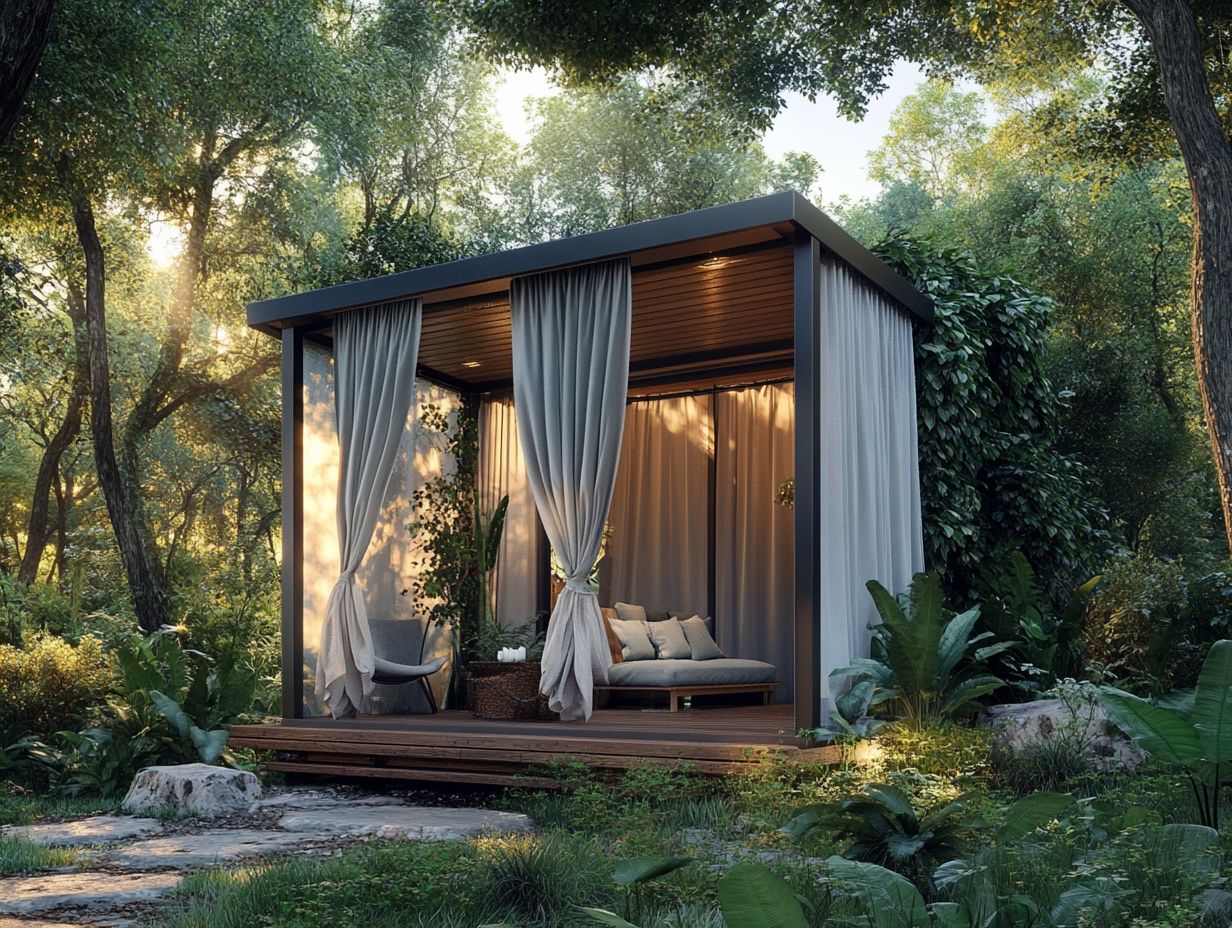
- Incorporate natural barriers like trees, shrubs, or fences to create separation and privacy.
- Use multi-functional furniture, such as bookshelves or sliding walls, to create defined spaces.
- Create a separate entrance for guests to minimize disruptions to your personal space.
1. Incorporate Natural Barriers
Using natural barriers in your tiny home boosts both beauty and privacy while connecting your indoor and outdoor living spaces. You can make the most of nature, even in urban settings, while embracing the Tiny Home Movement.
One effective strategy is to use various plant types, like tall grasses, shrubs, and climbing vines, serving as lovely, natural privacy screens. With strategic placement, landscaping can make your space feel more expansive and connected to the outdoors.
This design choice not only enhances your home s beauty but also creates a sense of calm and tranquility. By choosing natural elements, you align with biophilic design, which means creating spaces that connect you with nature.
2. Utilize Multi-Functional Furniture
Multi-functional furniture, like fold-down pieces and Murphy beds, is essential for tiny home living. You can maximize your living space while embracing a minimalist lifestyle focused on functionality and efficiency.
Alongside these innovative designs, consider modular sofas that transform into beds or have hidden storage. Such versatile pieces adapt to different needs throughout the day. For instance, a coffee table with adjustable height can serve as both a workspace and dining surface.
Investing in these multipurpose items optimizes storage and reduces the need for extra furnishings, leading to financial savings. Smart designs help create a living environment that balances comfort and practicality.
3. Create a Separate Entrance
A separate entrance boosts your privacy and adds a unique touch to your design. It allows you to enjoy outdoor living without interrupting your personal space.
This design choice enhances your home s functionality, providing a dedicated passage for guests while keeping the main living area free from foot traffic. Adding elements like a charming pathway or lush landscaping creates a visually appealing entrance.
Incorporating features like solid gates or strategic lighting enhances security, ensuring this space serves its purpose effectively. The combination of practicality and beauty makes this entrance a smart investment in convenience and style.
Start creating your own private oasis in your tiny home today!
4. Install Privacy Screens
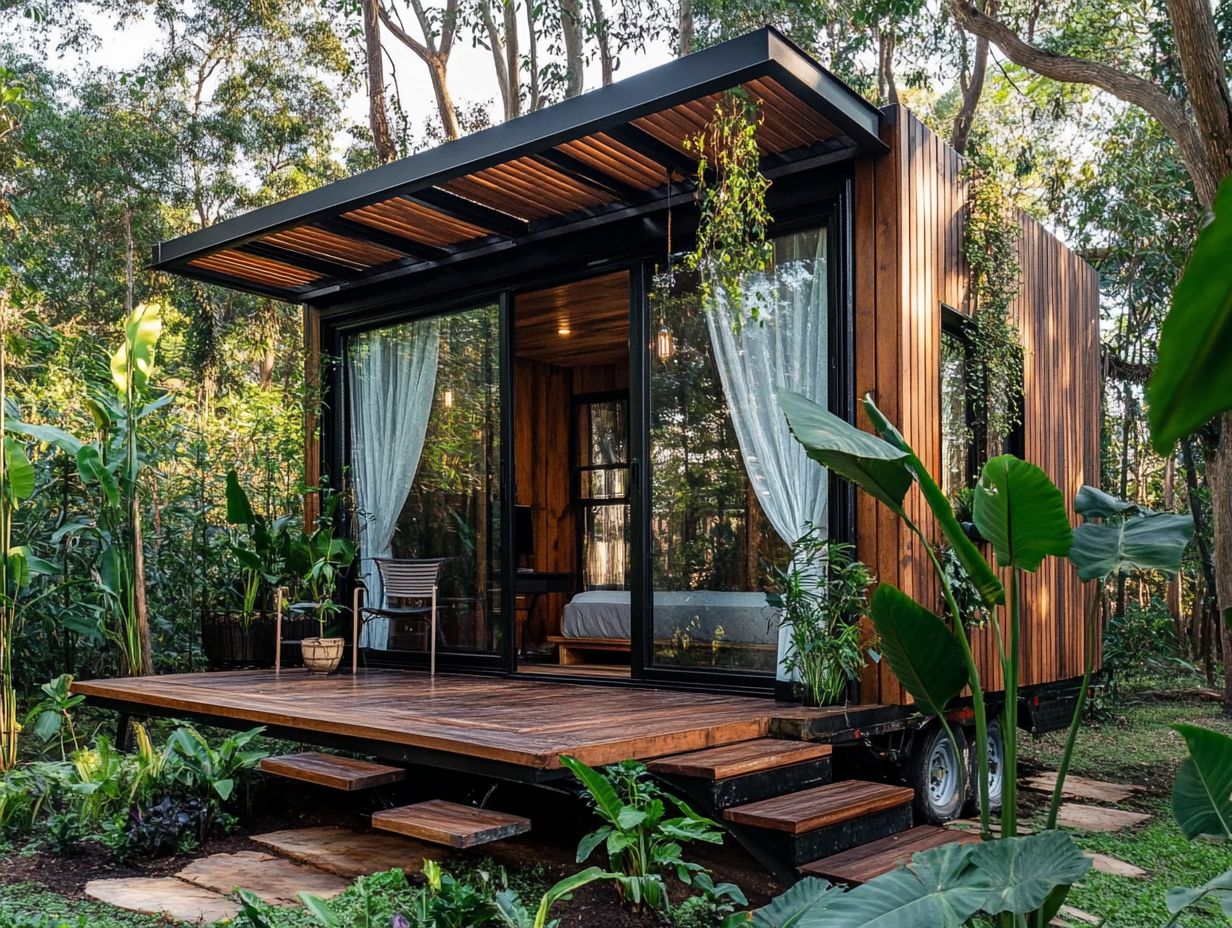
Installing privacy screens in your tiny home is not just a smart security move; it s also a stylish addition to your decor. These screens help create an outdoor sanctuary, enhancing your living experience while keeping your space clutter-free.
You ll find a variety of styles to choose from, whether you prefer the rustic charm of sleek wooden panels or the lightweight flexibility of fabric options. For instance, wooden slats can create a stunning backdrop for your outdoor seating, offering both shade and privacy while blending harmoniously with the surrounding greenery.
On the flip side, fabric screens bring versatility and a splash of color, perfect for cultivating a minimalist yet inviting aesthetic. By incorporating these privacy solutions, you not only secure your personal space but also elevate the overall ambiance, creating a true extension of your home.
5. Utilize Vertical Space
Maximize your space and enjoy a clutter-free, organized home! Utilizing vertical space in your tiny home is essential for enhancing storage solutions and creating functional areas that improve your overall living experience.
Incorporating creative shelving units that extend from floor to ceiling allows you to seamlessly integrate books, plants, and decorative items while ensuring an appealing aesthetic. Wall-mounted storage options, like pegboards or floating shelves, showcase your favorite trinkets or keep essential kitchenware within easy reach.
Hanging decor, such as art or plants, draws the eye upward, giving the illusion of higher ceilings and adding a personal touch to your space. These innovative strategies enhance efficiency and transform your living area into a stylish sanctuary that reflects your unique taste.
How Can Tiny House Dwellers Maintain Privacy?
Maintaining privacy in tiny houses is crucial for your personal well-being and comfort. It requires a thoughtful blend of strategic home design, effective communication within your community, and implementing smart home security measures tailored to tiny house living.
Start by having open conversations with your neighbors about mutual boundaries and expectations to foster a sense of respect and understanding that benefits everyone.
Invest in home security features like motion detectors and alarm systems. Simple steps, such as strategically placing outdoor lighting or adding window treatments, can also help create that essential personal space.
In close-knit environments, practicing mindfulness and maintaining good communication ensures that everyone respects one another’s privacy. This allows tiny house residents like you to thrive while embracing the perks of community living. Additionally, consider exploring 5 ways to reflect your personality in a tiny house to make your space truly your own.
What Are the Benefits of Privacy in Tiny House Living?
The benefits of privacy in tiny house living are numerous, providing you a sense of security and tranquility that alleviates stress while enhancing your overall quality of life.
This intimate environment, crafted with simplicity and efficiency in mind, allows you to create personal sanctuaries that encourage reflection and relaxation. For example, designated areas for solitary activities like reading or meditation can significantly boost your mental health.
Implementing security protocols such as smart locks or surveillance cameras elevates your physical safety and brings peace of mind. This enables you to relish the joys of minimized living without the constant worry of intrusion.
In conclusion, privacy is vital in tiny house living. By integrating these strategies, you can enhance your personal space and overall living experience. Start enhancing your tiny home today with these privacy tips!
What Are the Challenges of Maintaining Privacy in Tiny Houses?
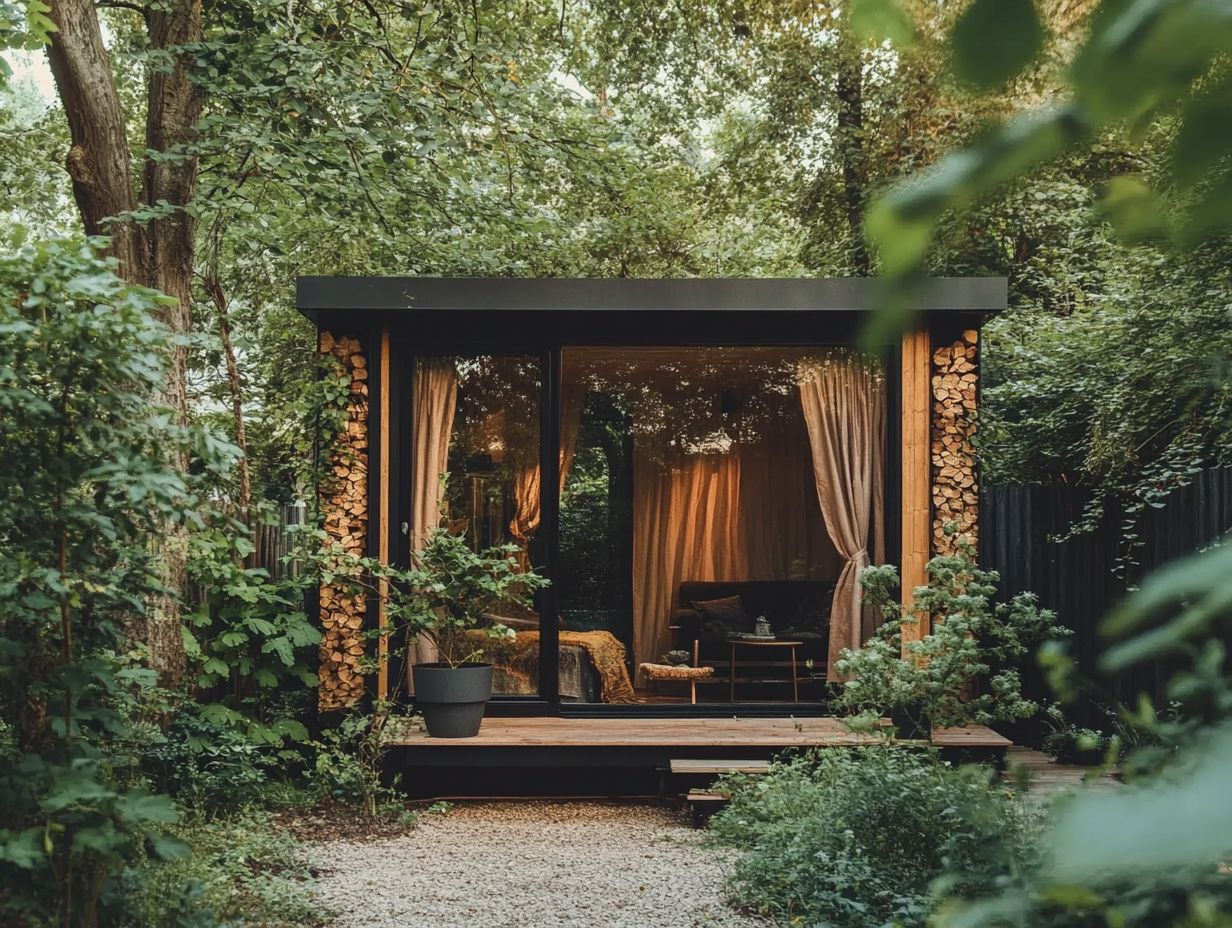
While the tiny house movement champions a minimalist lifestyle, maintaining privacy poses unique challenges. Living so close together can bring both excitement and challenges, especially in community living scenarios where neighbors are just a stone’s throw away. This proximity can amplify social pressures and decrease your personal space.
In these environments, the absence of physical barriers leads to an acute awareness of each other s routines. It can be tricky to carve out your own personal sanctuary. Noise can become a real concern, as sounds of cooking, socializing, or even everyday hustle and bustle seep through thin walls.
The dynamics of communal living add another layer of complexity. Shared spaces foster interaction but also encroach on individual privacy. As social trends increasingly favor integrated living environments, tiny house dwellers must skillfully navigate the delicate balance between engaging with the community and seeking solitude.
This raises important questions about how to cultivate a sense of personal space amid such interconnected settings.
Designing Your Tiny House for Maximum Privacy
Designing a tiny house to maximize privacy requires thoughtful planning. Collaborating with a professional who designs indoor spaces can help. You ll want to integrate smart home organization which refers to organizing your home efficiently and innovative design elements to carve out secluded, functional areas within that limited space.
By carefully considering the layout, you can position rooms strategically to minimize sightlines and create a genuine sense of retreat. Opting for soft, muted wall colors can evoke a calming atmosphere while also making tight spaces feel larger and more inviting. Additionally, exploring ways to incorporate art in tiny house design can enhance the overall aesthetic and personal touch of your space.
Incorporating natural barriers, such as tall plants or cleverly arranged furniture, enhances that desired sense of seclusion. Employing these design strategies, along with 5 ways to personalize your tiny house design, not only ensures your privacy but also elevates the aesthetic appeal of your home.
Creative Solutions for Privacy in Tiny Houses
Creative solutions for privacy in tiny houses can include innovative home decor ideas that elevate both functionality and style. Consider using decorative dividers, curtains, or movable partitions. These features enhance your privacy and contribute beautifully to the overall design of your space.
These features provide essential separation in multifunctional areas while maintaining a coveted sense of openness. For instance, bespoke shelving units can be a stylish backdrop and a clever storage solution that helps you keep everything organized yet easily accessible.
By incorporating lightweight and foldable designs, you can adapt your space as needed, ensuring a clutter-free environment. Utilizing materials like translucent fabrics allows you to introduce light while still enjoying a degree of seclusion, seamlessly blending aesthetics with practicality. Additionally, exploring 5 ways to integrate technology into tiny house living can enhance functionality in your compact space.
How Tiny House Dwellers Can Communicate Their Privacy Needs
Effective communication is essential for tiny house dwellers to express their privacy needs while nurturing positive relationships within the community. This ensures that everyone s lifestyle preferences are respected and understood.
Engaging in direct conversations can be one of the most impactful strategies. It involves open dialogues about expectations and boundaries from the very beginning. Clearly articulating your needs is crucial, whether that s a request for quiet hours or a desire for more personal space.
Establishing community guidelines can significantly enhance understanding and cooperation among neighbors. By discussing your preferences and boundaries, you help cultivate a respectful atmosphere that honors individual privacy, ensuring that everyone feels comfortable and secure in their chosen living environment.
Frequently Asked Questions
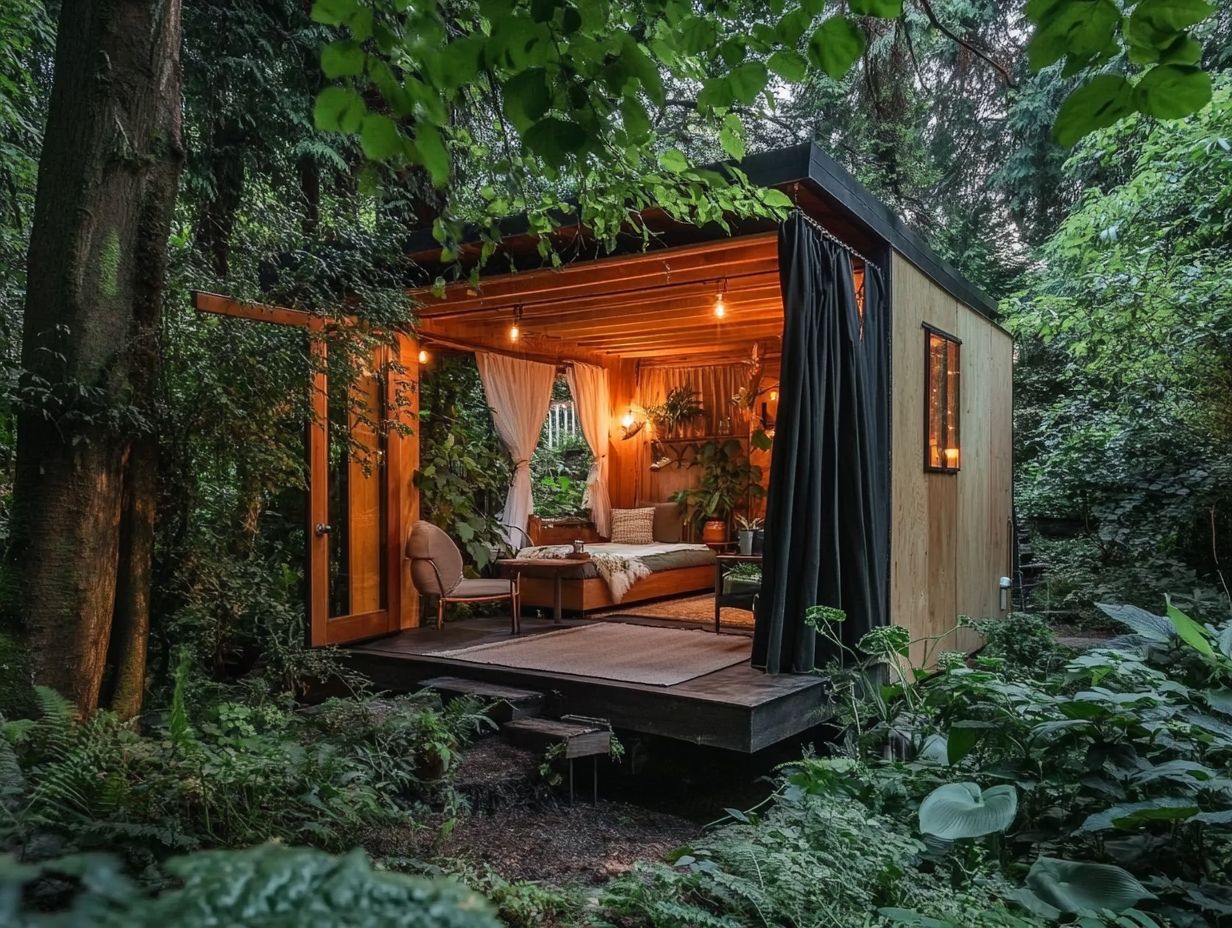
1. How can I enhance privacy in my tiny house design?
Enhancing privacy in tiny houses can be fun and creative. Use partitions, curtains, and clever storage solutions!
2. What are some effective partition options for tiny house designs?
Consider sliding doors, pocket doors, or folding screens. These options create separate living areas while giving you privacy.
3. How can clever storage solutions enhance privacy in a tiny house?
Hidden compartments and built-in shelves declutter your space. A tidy environment promotes peace and privacy.
4. Why is multi-functional furniture important for privacy in tiny house designs?
Furniture like Murphy beds and convertible tables maximizes space. This flexibility helps create distinct areas within your home.
5. How can designated zones enhance privacy in a tiny house?
Set specific areas for activities, like reading or working. This creates personal space and boosts your productivity.
6. What exterior features can be added to enhance privacy in a tiny house design?
Porches or decks offer private outdoor retreats. Adding plants or fences creates natural barriers that enhance your home s privacy.

